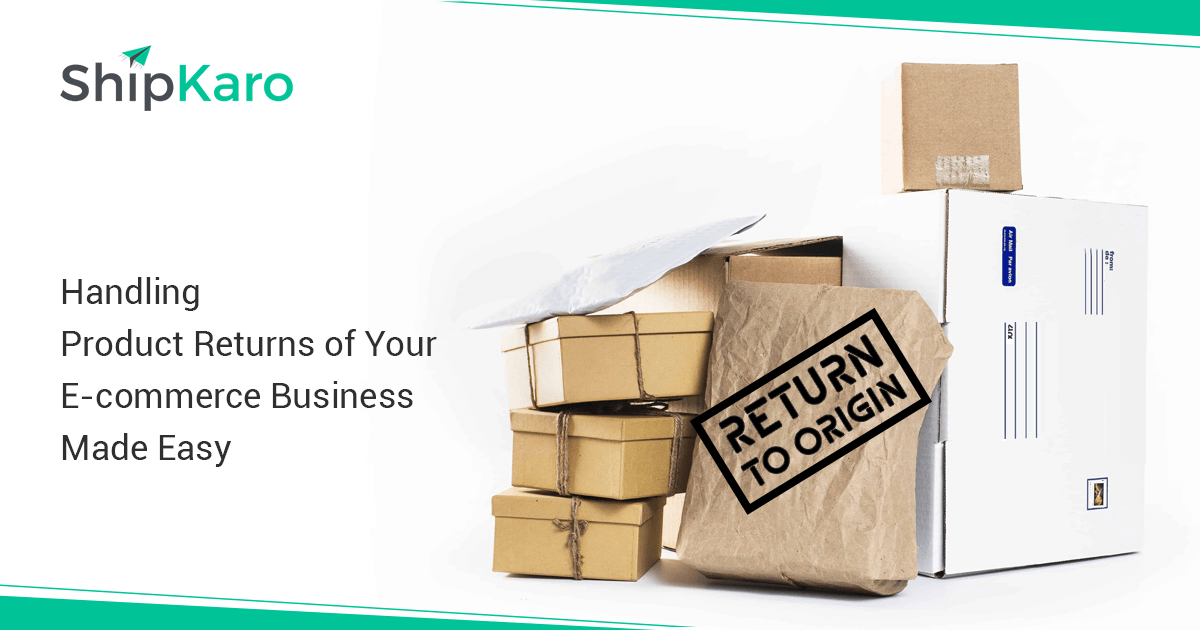Wouldn’t it be nice if your e-commerce business did not even need a returns management department? All your orders are efficiently delivered and all your customers are perfectly happy with their products.
Maybe in an ideal world!
In reality, however, the situation is quite the opposite.
Research shows that almost 30% of all online sales shipped to customers wind up coming back. While there are methods to reduce the number of order returns, they are not going to guarantee a 100% success rate – there are bound to be product returns as long as you own an online store. Which means that for a smooth and efficient logistics management, you need to plan and put in place an effective returns process as well.
Most online shoppers now check the return policy on a site before making the final purchase. Moreover, your existing customers are also going to rely on their experience with your returns management before they decide to make the next purchase. Most of them will buy again from your site if the return management process is hassle-free and seamless. Therefore, you should look at your return policies as a way of fostering customer loyalty and increasing customer satisfaction.
We’ve compiled some useful tips for handling returns to help you create a strategy that works for your e-commerce business and your customers.
Why is it necessary to manage product returns?
There are plenty of online sellers, who still do not value the necessity of effective returns management. And trust us, customers notice! It is important that you understand the impact that your product returns management can have on your online business.
- Customers will purchase again from a seller who provides a satisfactory return or exchange experience.
- Most online shoppers expect free shipping on returns as well. You need a solid plan for your logistics in order to cater to such expectations and use it to increase sales.
- Efficient product return completes the order fulfilment chain on a positive note and drives the final revenue for most online businesses.
The way your brand manages your product returns influences your customers’ shopping experiences. It influences your sales. It influences your organization’s operations. It influences your revenue.
Simply put, how you manage your product returns is a part of your business that you just can’t overlook.
Handling Product Returns in E-commerce Business
With a rich experience in handling shipping for ecommerce clients, our experts at ShipKaro have in-depth knowledge on the best practices in returns management. We have listed out a few industry recommendations on how to handle ecommerce returns, how to formulate a return strategy, and how to turn returns into an advantage instead of an expense.
- Make sure you have a return policy:
Today’s customers expect convenience and top-notch service. Which means that a “no-returns policy” is not going to do well with your customers. Creating and clearly mentioning a returns policy on your website builds trust with your customers which can convert into sales. Moreover, it documents what a customer can expect from your brand and how they can return a product through your logistics.
- Understand customer preferences:
Different types of customers have different preferences and needs. Similarly, the reasons they want to make a return will also be different. The way they prefer to do so will also vary. In order to differentiate yourself from the rest of the competition, you have to accommodate these differences.
- Publish your returns policy clearly
Make sure it is very easy to find. Make sure it is very easy to read and understand. Alternatively, you can also add an FAQ page with detailed descriptions about why and how a customer can return their orders with your e-commerce business. Try to avoid jargons and use unrestrictive and friendly language while drafting your returns policy.
Your returns policy should not be a last-minute addition to your website. It should reflect the theme of your site and should be coherent. Just like the rest of your website, it should be mobile-friendly, readable, usable etc.
- Offer free returns if possible
We know that it is easier said than done. Tier I e-retailers may have the resources and the capital to manage the costs of return logistics. However, for your growing business, this may not be a practical option. One easy way to offer free returns is to set a threshold purchase amount. In other words, provide free shipping on orders above a certain amount. This practise protects you by ensuring that you don’t spend a huge amount on shipping costs on a small-priced item. Also, it gives you an opportunity to upsell.
- Put a practical time limit on your return policy
Depending on your product type and e-commerce business, set a clearly articulated time-frame for product returns. For some product types, it is usually understandable for a customer to take 10, 20 or even 30 days to return an item. The reasons to return can also vary drastically. For instance, a fit issue or a defective product issue are two very different reasons for a customer to return. Therefore, draft a return policy that is flexible enough to accommodate these differences and provides a reasonable time limit for the customer to return.
- Keep your customers informed
Tracking your logistics and sharing the info with your customers is one easy way to keep them in the loop. Make sure they are updated at every step of the process. You can inform them of their product status through emails and messages. Enhanced communications can improve customer relations and their trust in your brand.
In short, returns play a huge part in the ‘big picture’ of your online business. Returns management has a direct influence on your supply chain management, inventory, customer experience and customer service. That is why managing returns smoothly and efficiently for your e-commerce business requires technology. With a logistics automation software like ShipKaro, you can now streamline your entire shipping processes using technology. With ShipKaro, you can even integrate your multiple marketplaces and manage everything under one roof.
Combined with an efficient shipping partner, these strategies for returns management are sure to result in a smoother, more seamless and straightforward process.
What other strategies have you tried for managing your returns? Let us know below in the comments section!




Leave a Comment